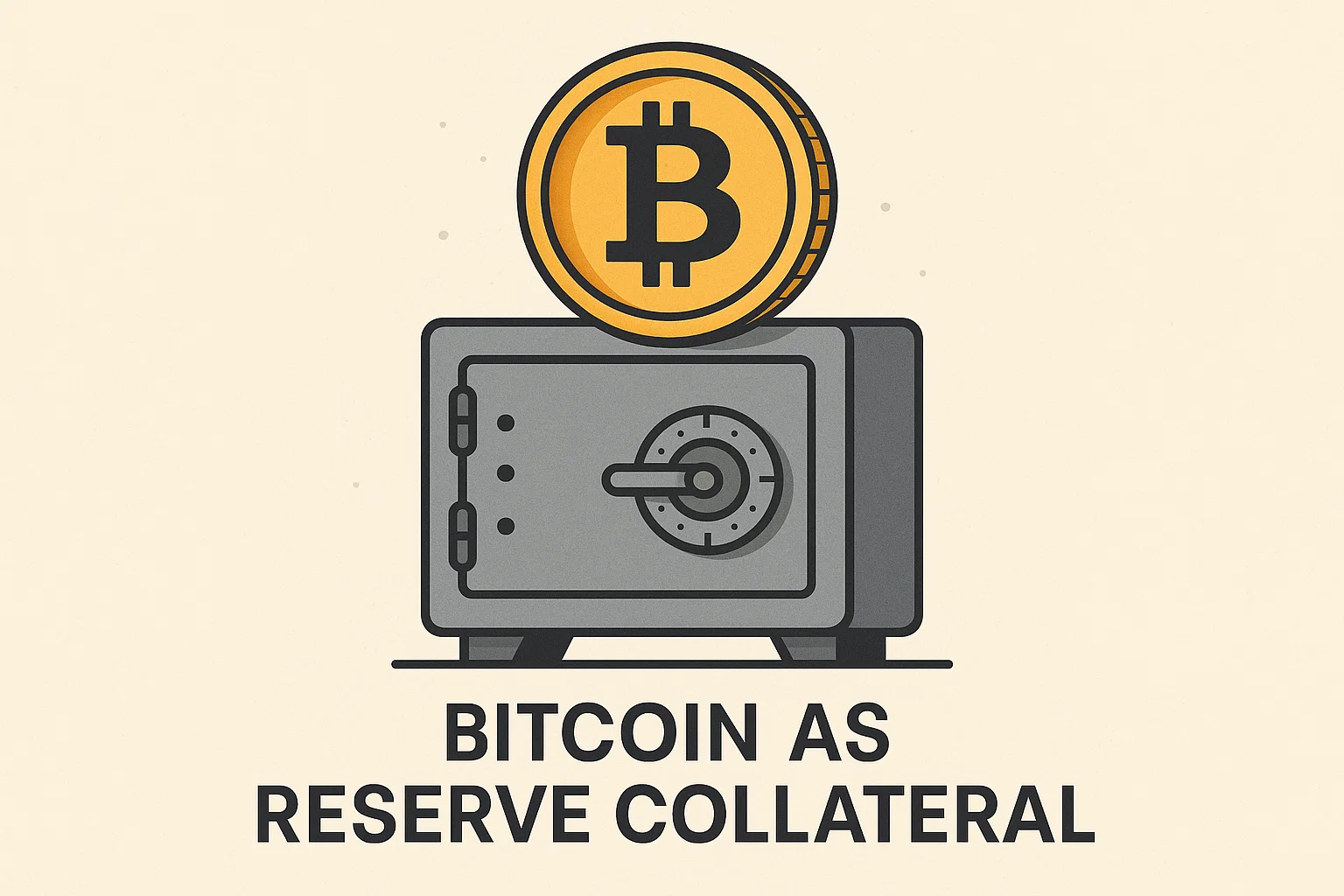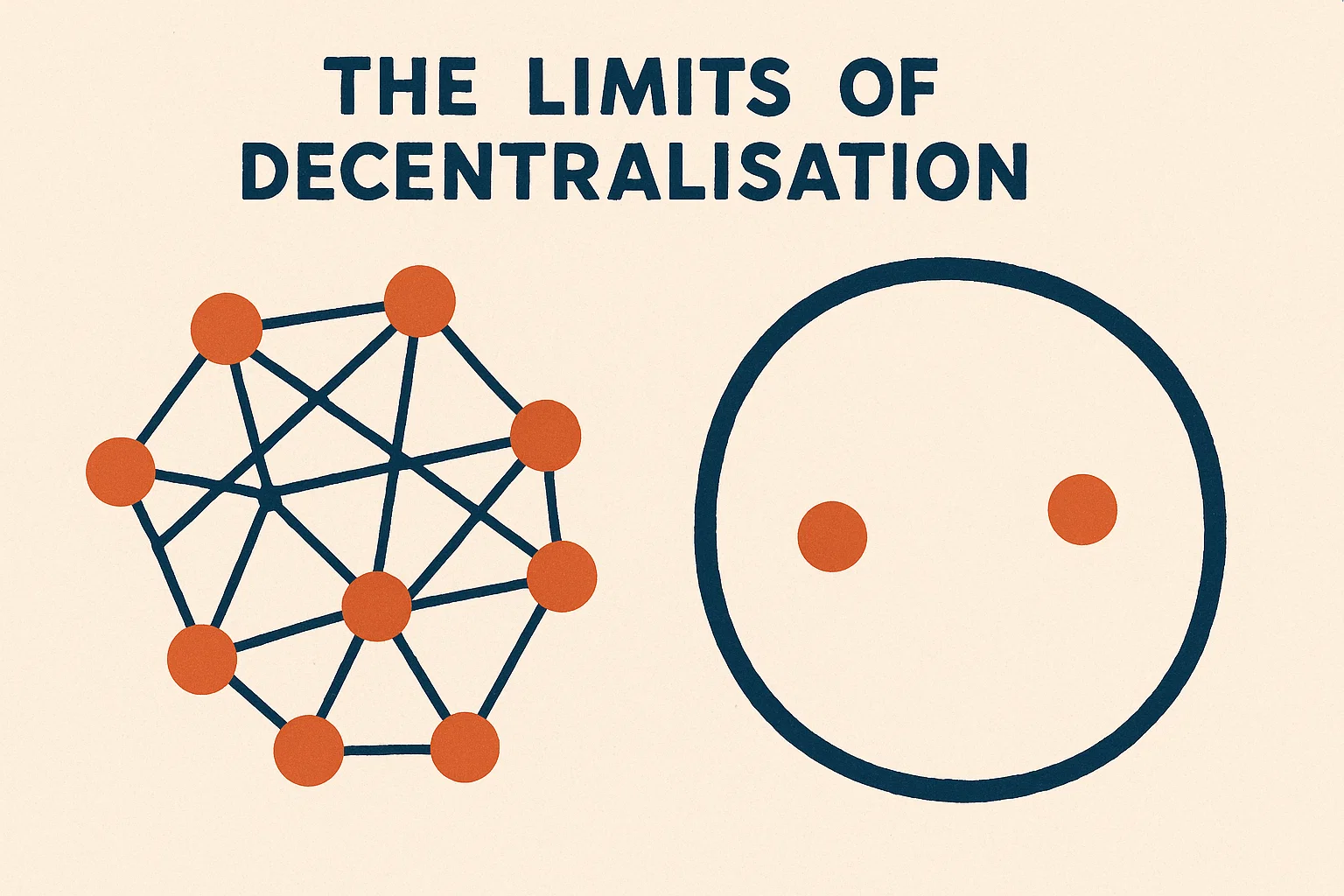For most of the twentieth century, the space race was a duel between nation-states. Rockets blasted off under national flags, research was fenced behind classified programs, and funding flowed through government budgets. Today, the launchpad looks very different. Private companies string satellite constellations across low Earth orbit. University teams test thrusters in garages. Open-source communities design avionics and guidance systems. Into this new ecosystem steps another disruptive force: Bitcoin and blockchain.
At first glance, what happens in the cryptosphere might seem galaxies apart from what happens in space. But the more closely we look, the more convergences we see. Decentralised finance (DeFi) can fund space missions in new ways. Smart contracts can automate satellite operations and insurance payouts. Tokenisation can turn complex space assets into tradable digital units. Even the concept of an interplanetary internet dovetails with blockchain’s trust-minimising architecture.
This article explores whether Bitcoin and blockchain can truly drive a new decentralised space race, where open protocols and market incentives catalyse exploration, research, and infrastructure far beyond Earth. We’ll examine the mechanics, the use cases, the regulatory and technical hurdles, and the real-world steps that could transform a buzzword into a booster.
The convergence of crypto and space
From centralised programs to permissionless participation
Space innovation is historically capital-intensive and slow, often gated by agencies or a small set of prime contractors. Blockchain networks invert that model by enabling permissionless participation. Anyone with capital and conviction can contribute to funding, computing, and governance. This shift changes who gets to build in space, how quickly they can iterate, and what kinds of projects are viable.
Where aerospace has long relied on multi-year procurement cycles, blockchain-native communities move with open-source velocity. Protocols upgrade rapidly. DAOs vote on budgets in days, not quarters. This cadence could spill over into space, accelerating the design and deployment of cubesats, edge compute payloads, and in-space manufacturing experiments.
Why Bitcoin matters specifically
While the broader blockchain universe offers programmability, Bitcoin contributes monetary properties that are especially compelling for a frontier industry. Its fixed supply, global liquidity, and censorship resistance can make it a sturdy treasury reserve for space startups and consortia. For teams operating across jurisdictions, Bitcoin’s neutral settlement layer can simplify cross-border payments and reduce reliance on intermediaries.
Moreover, Bitcoin mining’s demand for cheap, stranded energy has spawned creative infrastructure plays in remote regions. Similar models could co-evolve with off-grid space infrastructure—think lunar microgrids or orbital power-beaming experiments—where economic incentives align with distributed, resilient power networks.
New funding rails for the space economy
Tokenised missions and fractional ownership
Traditional aerospace finance concentrates risk among a few institutions. Tokenisation can fractionalize that risk and let a global base of supporters participate. A satellite mission could issue asset-backed tokens representing rights to a percentage of data revenue, downlink time, or imagery royalties. Investors would gain exposure to a diversified portfolio of orbital assets, the way they might hold shares of a real estate investment trust.
With smart contracts, distributions from data marketplaces could flow automatically to token holders according to transparent rules. Secondary markets would provide liquidity, allowing investors to adjust exposure as the mission progresses, while on-chain governance aligns incentives between builders and backers.
DAOs as mission control
A decentralised autonomous organisation (DAO) can operate like a community-run mission control. Contributors propose and vote on mission milestones—hardware purchases, launch partners, ground station leases—using on-chain governance. Contributors earn governance tokens for writing code, validating flight software, or negotiating payload slots, transforming sweat equity into upside.
Importantly, DAOs can route funds in real time to teams that hit measurable milestones. Instead of waiting for a grant tranche or a board meeting, a DAO can release funds upon verifiable proofs, such as successful thermal-vacuum tests or radiation-hardening certifications, recorded on-chain and attested by independent validators.
Bitcoin as reserve collateral

Space DAOs and startups can hold a Bitcoin treasury to diversify cash management. In volatile capital markets, a Bitcoin reserve can be collateralised in overcollateralized lending protocols, unlocking stablecoin liquidity to pay suppliers, insure launches, or bridge manufacturing gaps, while leaving the core asset unliquidated. Used responsibly, this blends sound money with operational flexibility.
Space data as a decentralised market
Open markets for orbital data
Satellites continuously produce valuable data—imaging, weather, spectrum analytics, AIS and ADS-B signals, and space environment telemetry. Today, access is often locked behind enterprise contracts. Blockchain enables decentralised data marketplaces where payload operators publish metadata and pricing, and buyers—researchers, insurers, agriculture platforms—purchase access via micropayments.
With pay-per-query or streaming payments, small teams can afford high-quality data without long-term commitments. Zero-knowledge proofs (ZK-proofs) could validate that a query or model was executed against a dataset without leaking the dataset itself, preserving sensitive details while ensuring verifiable computation.
Verifiable provenance and anti-tamper logs
For data that informs public policy or high-stakes insurance, provenance matters. Anchoring hashes of raw sensor data to a blockchain creates an immutable timestamp proving when and by whom the data was captured. If a pixel, payload, or processing pipeline is disputed, auditors can compare the hash to the chain to detect tampering. This is crucial for Earth observation, climate monitoring, and disaster response, where trust in the data can save lives.
Automating risk with smart contracts
Parametric insurance for launches and satellites
Launches and satellites face risks—from pad anomalies to space weather. Parametric insurance pays out based on an event trigger rather than long claims adjudication. Smart contracts can escrow premiums and release payouts when predefined conditions are met, such as failure to reach orbit, deviation from an orbital slot, or abnormal telemetry over a defined threshold. Oracles feed on-chain contracts with verifiable telemetry and launch provider records, improving speed and transparency.
Service-level guarantees for ground stations
Ground station time is a scarce commodity. With programmable SLAs, satellite operators can reserve downlink windows and pay in stablecoins tied to service quality. If latency or availability falls below thresholds, automatic rebates kick in. Ground station networks can sell capacity in auction markets, smoothing demand across time zones and orbits, while a shared ledger keeps everyone’s rights and responsibilities in sync.
Decentralised infrastructure in orbit
Routing and identity for an interplanetary internet
As humanity pushes deeper into space, the need for secure, delay-tolerant networking will intensify. Decentralised identifiers (DIDs) and verifiable credentials give satellites, rovers, and ground stations self-sovereign identities. Messages stamped with these credentials can be authenticated without a single point of failure. Combined with content-addressable storage and delay/disruption-tolerant networking (DTN), blockchains may serve as global trust anchors for routing instructions, software updates, and audit trails.
Edge compute and marketplace scheduling.
Modern satellites are flying computers. They can run edge AI models for cloud detection, ship recognition, or wildfire early warning. A decentralised job marketplace could allow researchers to deploy algorithms to in-orbit edge nodes. Payment streams flow as models run, verified by remote attestation and hashed outputs. Over time, satellites that prove reliable execution histories accrue reputation scores, improving their booking rates and pricing power.
In-space manufacturing and tokenised outputs
From fibre optics to bioprinting, microgravity manufacturing can produce goods with unique properties. Output units can be tokenised at the factory level with non-fungible tokens (NFTs) that track provenance, quality tests, and custody. Downstream buyers in pharma or photonics can verify authenticity and condition through on-chain certificates, reducing counterfeit risk and smoothing customs processes.
Energy, mining, and resource coordination
Bitcoin mining as a catalyst for frontier energy
Bitcoin mining has a peculiar superpower: it will consume energy anywhere it’s cheap and available, even if intermittent. As space infrastructure experiments with solar farms, power-beaming, and lunar regolith-based energy storage, a flexible buyer of last resort can stabilise new energy systems. Miners colocated with experimental grids can absorb surplus production, monetise during off-peak periods, and vacate capacity instantly when rockets need the juice.
Resource registries and claims
Long-term, space exploration raises questions about resource rights. While international law governs much of this, blockchains can provide transparent registries where exploration logs, scientific readings, and extraction attempts are recorded with cryptographic attestations. This doesn’t replace treaties, but it can give policymakers and researchers auditable evidence when debating commons governance and sustainable extraction.
Regulatory, technical, and economic hurdles
Jurisdiction and compliance
Space is multinational; so is crypto. Projects must navigate export controls, launch licensing, spectrum allocations, and financial regulations like KYC/AML. Designing compliant rails from day one—using whitelisted addresses, permissioned data zones, and privacy-preserving compliance proofs—will be essential. The most successful projects will treat regulators as stakeholders, providing transparent reporting and building safety cases that incorporate both aerospace and financial standards.
Security at every layer
A satellite is only as strong as its weakest interface. Blockchain keys controlling data payments or insurance escrows must be managed with hardware security modules (HSMs) and multi-signature policies. Flight software should isolate on-chain modules in sandboxed environments with strict rate limits and robust fail-safes so financial events cannot jeopardise mission safety. Formal verification of smart contracts and rigorous penetration testing of ground segment integrations will separate serious programs from speculative experiments.
Economics beyond hype cycles
Crypto markets are volatile; rockets are unforgiving. Mission planners should model conservative cash flows, hedge token exposure with stablecoins, and avoid dependency on speculative token appreciation. The projects that endure will ship real utility—reliable data, trusted provenance, efficient insurance—priced in contracts that make sense with or without a bull market.
Realistic pathways from here to launch
Start with data, then move to autonomy.
The near-term beachhead for Bitcoin and blockchain in space is the data layer. Orbital data is abundant, valuable, and already digitised. A project can begin by hashing data for provenance, then add streaming micropayments for access, and later introduce dynamic pricing driven by demand. Once those rails are stable, automation of insurance and ground station SLAs becomes the next logical step.
Build multi-stakeholder alliances
No single team can solve propulsion, insurance, data distribution, and regulation. Forming alliances across universities, startups, cloud providers, launch aggregators, and ground station networks will be pivotal. A DAO can serve as the umbrella, but it should be anchored by real-world contracts, clear IP frameworks, and service-level objectives that keep contributors aligned.
Ship minimal viable missions.
Rather than promise a fully decentralised orbital economy, teams can launch minimal viable missions: a cubesat that publishes verifiable data hashes, a ground station that accepts stablecoin payments, or an Earth-imaging payload that participates in an open marketplace. These stepping stones prove value, de-risk partnerships, and attract more contributors and capital.
Will Bitcoin and blockchain actually drive the next space race?
The case for acceleration
Bitcoin and blockchain won’t replace rockets, but they can accelerate everything around them: funding, coordination, data commerce, and trust. By lowering barriers and aligning incentives, they can attract more builders, more experiments, and more resilient infrastructure. This is how races are won—not just with a faster engine, but with a smarter ecosystem.
The limits of decentralisation

There are domains where centralisation remains necessary, from launch licensing to collision avoidance. In emergencies, human-in-the-loop control and government oversight will remain paramount. A pragmatic future blends open protocols for markets and provenance with central authorities for safety and law. The interplay, not the purity, will define the next era.
What it could look like by the late 2020s and early 2030s
Everyday interactions with an orbital marketplace
Imagine a researcher requesting a specific timespan of SAR imagery through a marketplace interface. The query price updates dynamically, the payment clears instantly via a stablecoin channel, and a ZK-proof certifies that the model ran on authentic data. If downlink quality dipped, an automatic rebate applies. Meanwhile, token holders funding the constellation receive a sliver of the revenue in their wallets, while auditors can verify the dataset’s immutable provenance on-chain.
A spectrum of Bitcoin usage
Some missions hold Bitcoin on their balance sheets. Others accept it for services or collateralise it to unlock working capital. In regions where traditional banking is slow or costly, Bitcoin becomes the de facto cross-border settlement rail for parts and partnerships. The net result is a more global, liquid, and inclusive space economy that can survive uncertain macro cycles.
Conclusion
Bitcoin and blockchain won’t launch rockets. But they can launch a new decentralised space race by transforming how we fund missions, trade data, insure risks, and verify truth. The technology is best suited to serve as the connective tissue: trust-minimised payments, programmable contracts, verifiable provenance, and open governance. If builders pair these strengths with aerospace rigour—redundancy, safety, and compliance—the result could be a flywheel where thousands of small contributions add up to giant leaps. The most exciting part is not that tokens go to space, but that space becomes an open platform where anyone, anywhere, can contribute and benefit.
FAQs
Q: How can Bitcoin help a space startup right now?
Bitcoin can function as a treasury reserve and global settlement rail, simplifying cross-border purchases of components and services. A startup can also collateralise Bitcoin through lending protocols to access stablecoin working capital, hedging price risk while retaining long-term upside.
Q: What blockchain use case is most ready for space today?
Data provenance and marketplaces are closest to deployment. Hashing data for immutable timestamps, selling access via micropayments, and automating ground station SLAs with smart contracts require minimal changes to flight hardware and provide immediate value.
Q: Are DAOs legally recognised for space missions?
DAOs can coordinate contributors and funds, but missions still need compliant legal wrappers. Teams typically pair a DAO with an incorporated entity to handle licensing, export controls, and insurance, while using on-chain governance for budgeting and roadmap decisions.
Q: Could blockchain increase satellite security risks?
Any added interface can increase the attack surface. Projects must use HSM-backed keys, multi-signature policies, and isolated on-chain modules. Smart contracts should be formally verified, and mission-critical systems must prioritise safety over on-chain automation.
Q: Will decentralisation replace national space agencies?
No. Agencies will remain central for safety, standards, and deep-science funding. The opportunity is a hybrid model where open protocols handle markets and provenance, while agencies focus on oversight, coordination, and missions that require long planning horizons and public interest mandates.
Read more: Blockchain in Global Finance: How It Became Mainstream in 2025




